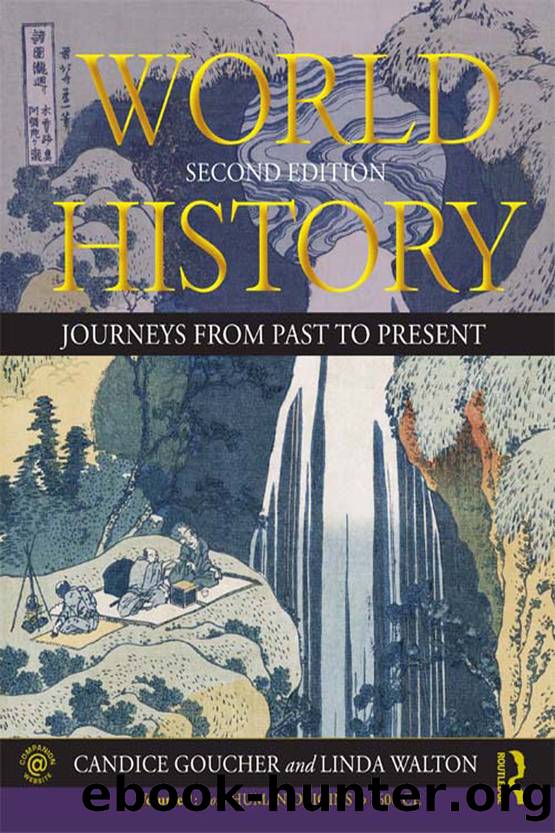World History by Goucher Candice;Walton Linda;

Author:Goucher, Candice;Walton, Linda;
Language: eng
Format: epub
Publisher: Taylor & Francis Group
7.3 Akuaba fertility figure. The idealized image reflects the desirability of children believed to be the reincarnation of ancestors.
One of the best-known sculptural traditions from the Akan region is the small, abstracted carving of a human figure known as akuaba, literally âAkua's child.â Oral traditions claim that a woman named Akua, desperate to produce children, once approached a local priest. He consulted the spirit world and then instructed Akua to commission the carving of a small wooden child. She was told to carry the child on her back, feed it, and care for it as if it were real. The whole village laughed at her until she succeeded in her quest to become pregnant and gave birth to a beautiful daughter. The tradition illustrates the high status and importance associated with motherhood in matrilineal societies, even ones in which women are politically subordinated. Children had relatively few rights, since knowledge and power, considered to be the basis of rights, were thought to accumulate with age. Still, children were accorded respect because they were believed to be the reincarnation of ancestors. The akuaba fertility figures suggest the important role of children in reflecting spiritual harmony, ideals of individual beauty, and the well-being of the family order.
The extent to which such a unit as the household-family was mediated by the Akan state or local political authority varied according to the status of its members. Typically, interference in the creation of marriage alliances allowed a patriarchy to control the labor of women and their children and thus the accumulation of any household surplus. Even when wealth was inherited through the female line, most women were excluded from most political offices. Exceptions were made for elite Akan women who were beyond their childbearing years. The female office of queen mother was secondary to that of the king, but she was omnipresent and consulted in the ascension of the head of state. Women acted as priestesses and even diplomats who could find themselves making significant contributions to statecraft and foreign policy.
Download
This site does not store any files on its server. We only index and link to content provided by other sites. Please contact the content providers to delete copyright contents if any and email us, we'll remove relevant links or contents immediately.
| Archaeology | Essays |
| Historical Geography | Historical Maps |
| Historiography | Reference |
| Study & Teaching |
Underground: A Human History of the Worlds Beneath Our Feet by Will Hunt(11933)
Sapiens by Yuval Noah Harari(5208)
Navigation and Map Reading by K Andrew(4924)
The Sympathizer by Viet Thanh Nguyen(4209)
Barron's AP Biology by Goldberg M.S. Deborah T(4014)
5 Steps to a 5 AP U.S. History, 2010-2011 Edition (5 Steps to a 5 on the Advanced Placement Examinations Series) by Armstrong Stephen(3650)
Three Women by Lisa Taddeo(3297)
Water by Ian Miller(3060)
The Comedians: Drunks, Thieves, Scoundrels, and the History of American Comedy by Nesteroff Kliph(2999)
Drugs Unlimited by Mike Power(2497)
The House of Government by Slezkine Yuri(2123)
A Short History of Drunkenness by Forsyth Mark(2121)
DarkMarket by Misha Glenny(2112)
And the Band Played On by Randy Shilts(2049)
The Library Book by Susan Orlean(2011)
Revived (Cat Patrick) by Cat Patrick(1909)
The Woman Who Smashed Codes by Jason Fagone(1879)
The House of Rothschild: Money's Prophets, 1798-1848 by Niall Ferguson(1815)
Birth by Tina Cassidy(1815)
